

We didn't know what to expect at Canyon de Chelly. We knew there were
ancient cliff dwellings and that was about the extent of our knowledge. None
of the trails are published and in order to go into the canyon, one must be
accompanied by a Navajo guide. We hired Daniel (that's him at the wheel,
below) to take just the four of us on a jeep tour. Daniel was born and raised
in Canyon de Chelly. He took us in his jeep (without seatbelts) into the
Canyon, through the high water. It was slippery and muddy and exciting! He had
to get out of the jeep and check for water depth a couple of times because we
almost got stuck once. He would say "Oopala" which roughly
translated means "Oh boy" in the colloquial sense. And then we would
safely cross a part of the river and he would say "Alrighhhhhhht!".
We all loved the time in the Canyon and the time with Daniel and the jeep ride
itself. Jody and Joya rode in the backseat initially where Jody hung on to
Joya's shirt to keep her from flying out when we went over bumps.
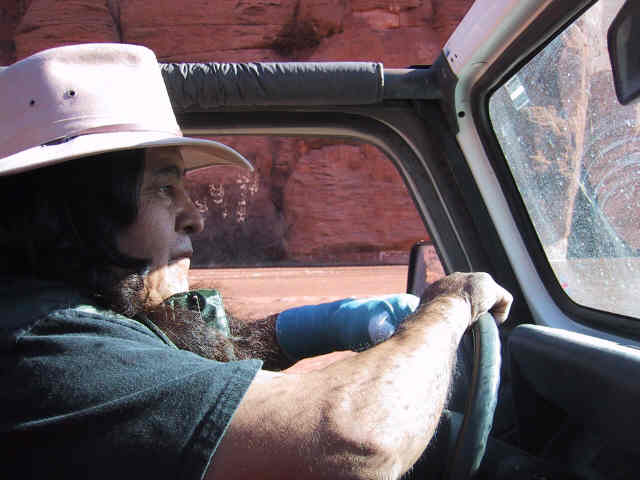
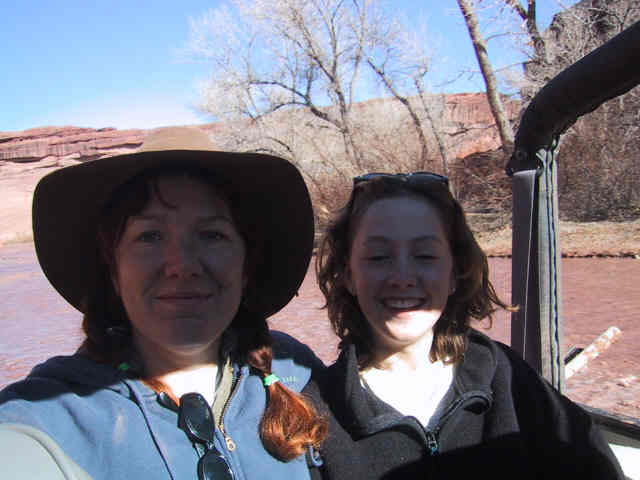
Among some of the things we saw this day were Anasazi pictographs. The hand
prints were used as signatures and you can also see a snake, Kokopelli (on his
side) and the picture of a man and other things. The Canyon is still the summer
home of many families of Navajo and these pictographs and petroglyphs and
ancient ruins are just on the Canyon walls without any fences or protection of
any kind. Canyon de Chelly is the heart and homeland of the Navajo Nation and
when the Reservation boundaries were drawn up, Canyon de Chelly was at the
center of it.
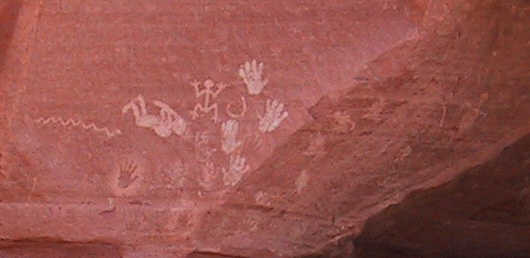
This is another set of pictographs, this time depicting a deer hunt. This is
an example of Navajo pictograph, since the hunters are on horseback. Horses
became part of the Navajo culture when the Spanish explorers introduced them in
the 1600s. The Anasazi , and then Navajo, have been living in the Canyon since
at least 800 A.D.
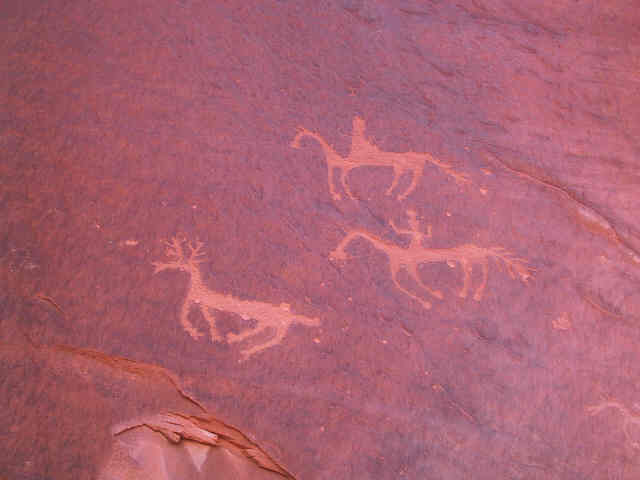
This is Daniel checking the water level.
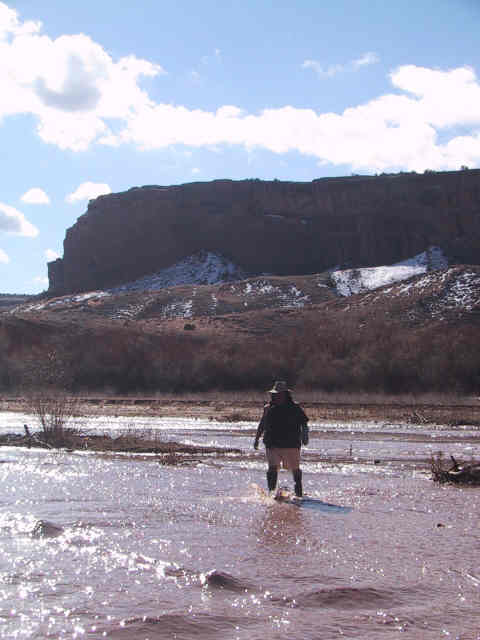
Below is a photo of one of the many cliff dwellings in the Canyon. Each group
of rooms included one kiva (or ceremonial room) which was round. The buildings
were made of rocks and adobe and the entrance to the rooms was through the roofs
via ladders. The rooms were often stacked on top of each other with the topmost
rooms using the ceiling of the cave as the ceiling of the rooms.
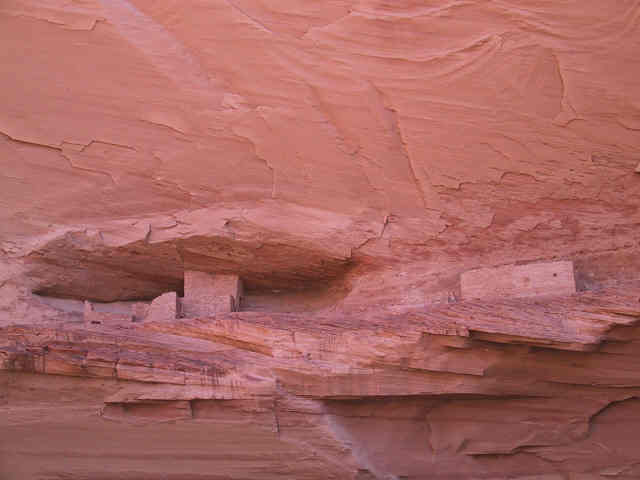
We forgot to mention that we were the only ones in the Canyon that day,
partly because it was February but also because the water was fairly high. Below
you can see some of the melting snow and ice causing the high water.
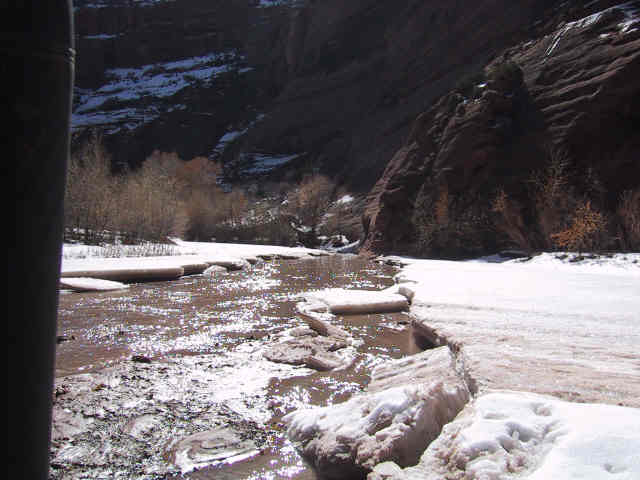
The large rock below is called Fortress Rock because the Navajo people stayed
up there for six months trying to wait out the U.S. Army. Lieutenant Kit Carson
was there with his men to bring the Navajo out of Canyon de Chelly. After six
months, the Navajo began to starve and were forced to come down. They were
escorted out of the Canyon on The Long Walk. Very much like the Cherokee's Trail
of Tears, the Navajo were forced out of their homeland and relocated until the
late 1800's when the treaty was signed giving them back some of their land.
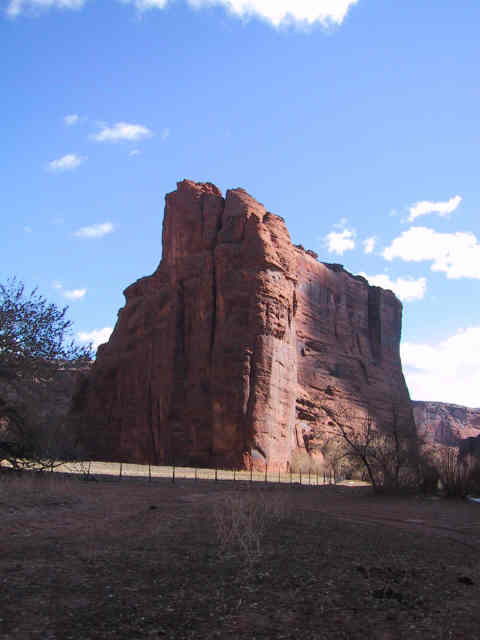
There is one place non-Navajo may go in Canyon de Chelly without a guide and
that is called the White House, named for one wall of white adobe. This is a
picture of Jordan on the path down to the White House ruins. Note the snow on
the north facing canyon wall.
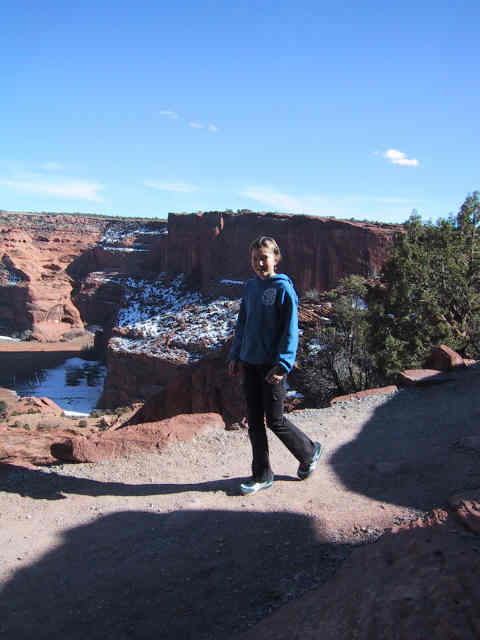
Here is the White House ruin and a picture of the sheer canyon walls.
If you have
lots of bandwidth, clicking on the leftmost picture below will bring up a 1.4MB
image with lots more detail, so you can get a better sense of the size of
things.
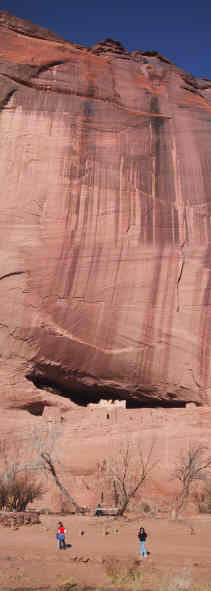
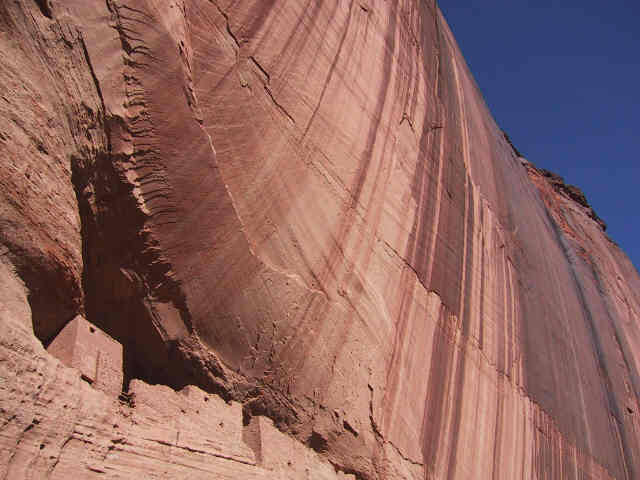
Here the girls contemplate napping in the shade of the Historical Marker. The
sun felt warm and sopophoric . The man in the background was making silver
jewelry for sale. The Navajo Nation is quite poor with most of the people making
their living by ranching, jewelry making, rug making, guiding or another tourist
trade. Non-Navajo are more or less tolerated for economic reasons.
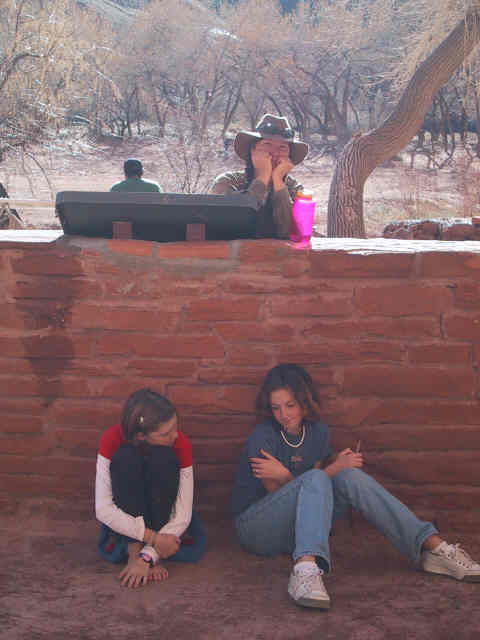
This is a last view from the top of the ridge after we walked out of the
Canyon. We passed several people going home from school and/or work, walking
down into the Canyon just as we had. The Canyon was beautiful and the sense of
history was all around us and very much alive. Daniel, our guide, sang us a
Navajo song that was a prayer to the earth for letting us walk upon her. We felt
much gratitude for being allowed to experience this. We also gathered a little
bit of sacred water from the river to take to Marina, the girls' midwife, as a
gift.
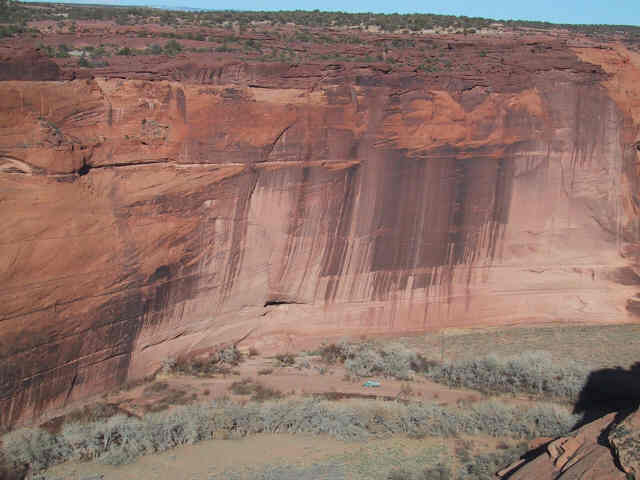
February 22 - The Fridge gets a cabinet
![]()